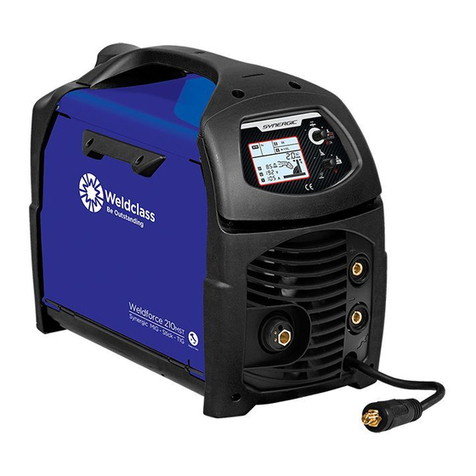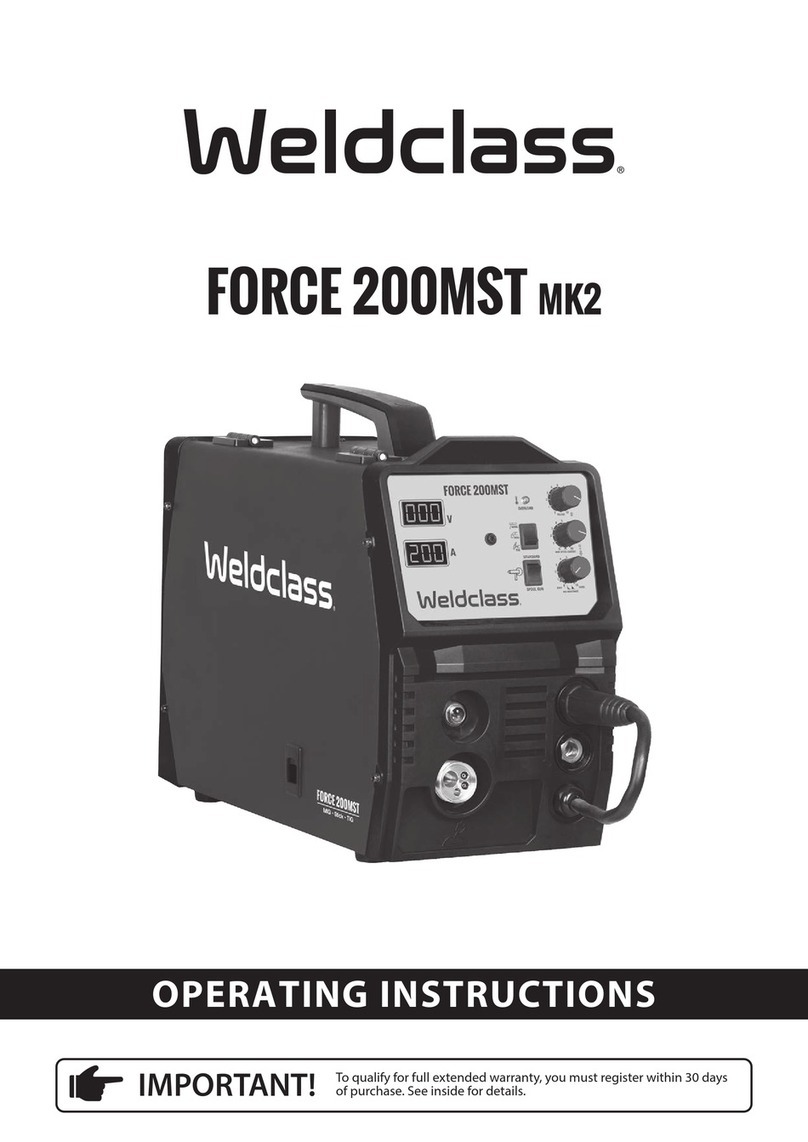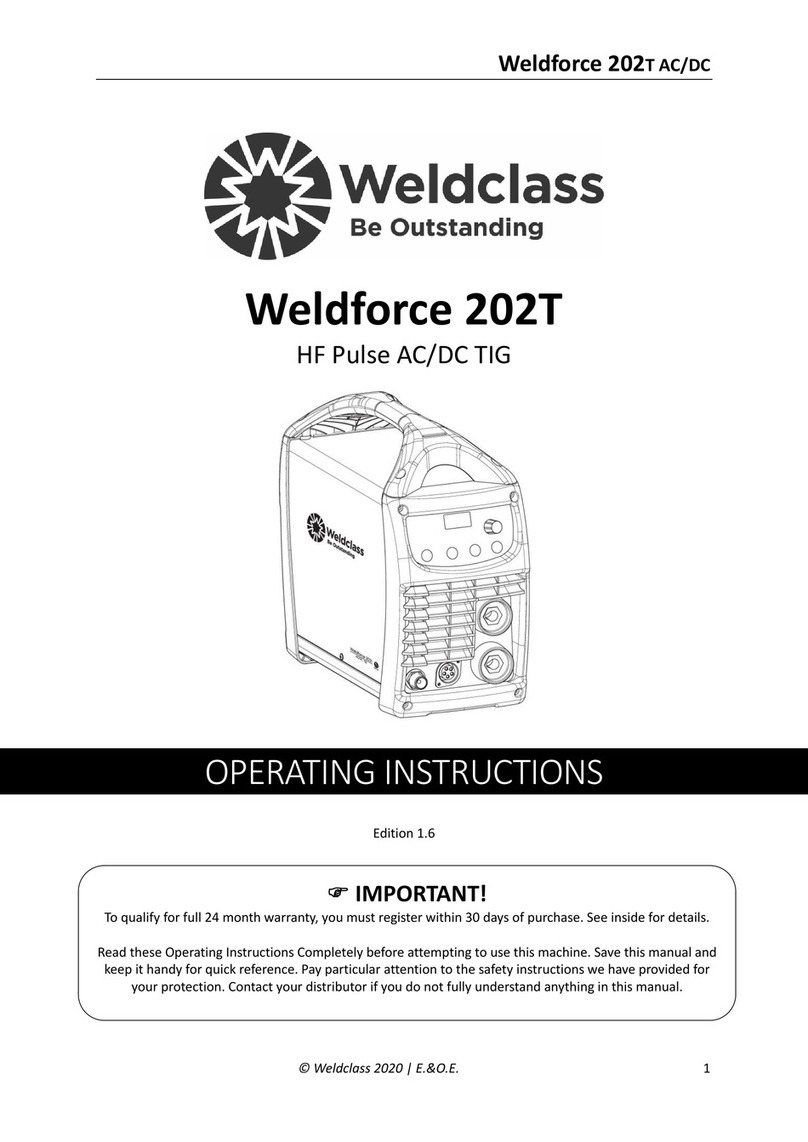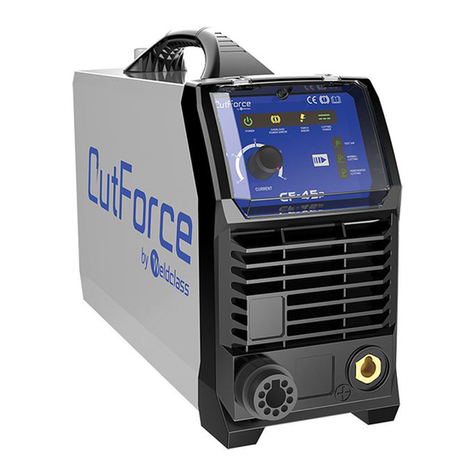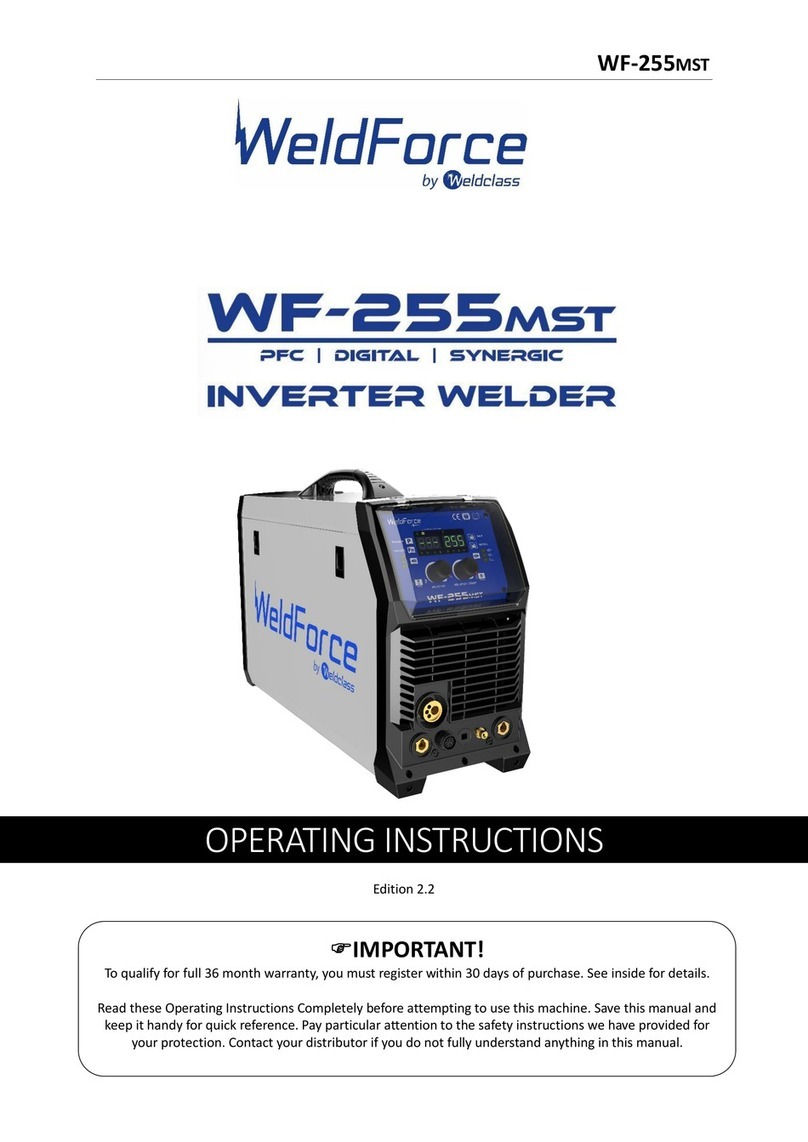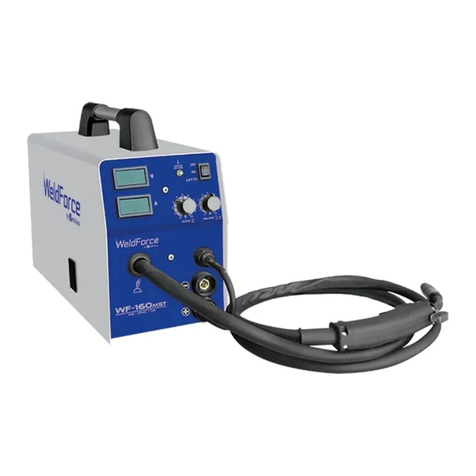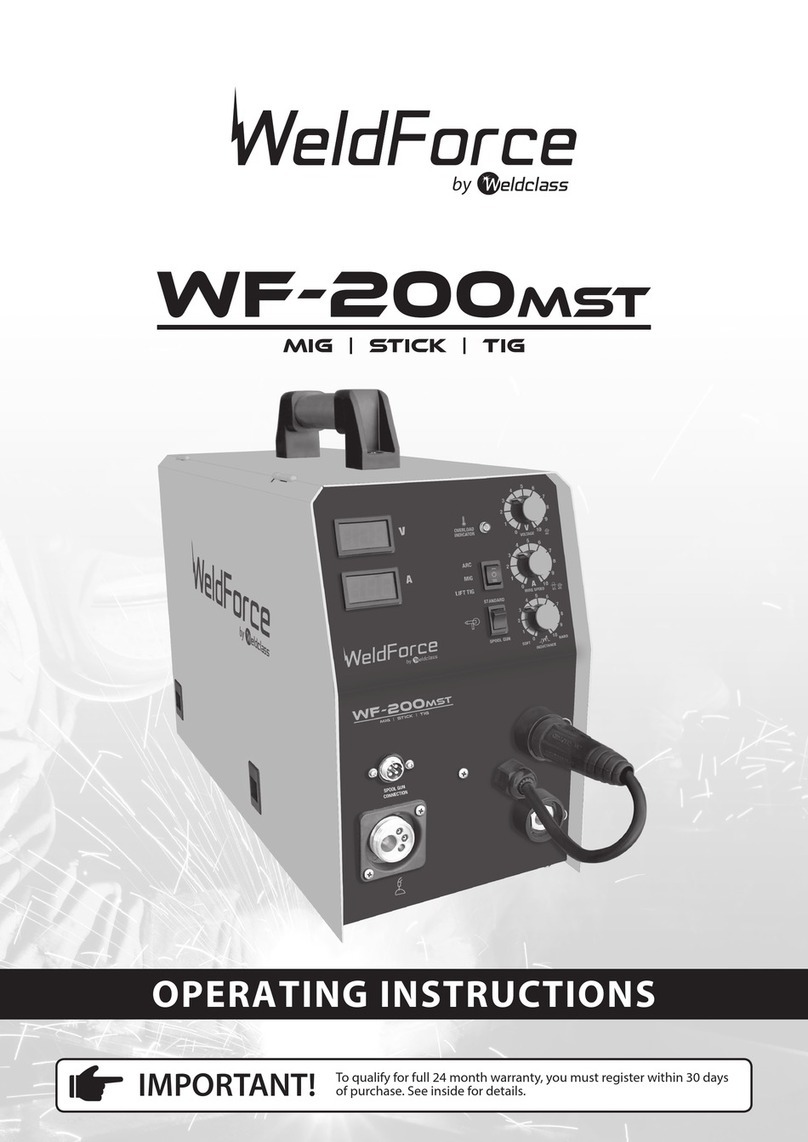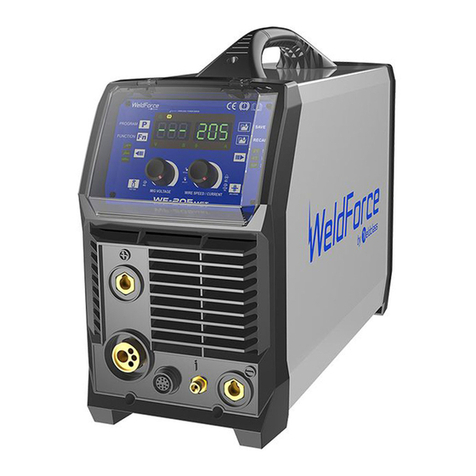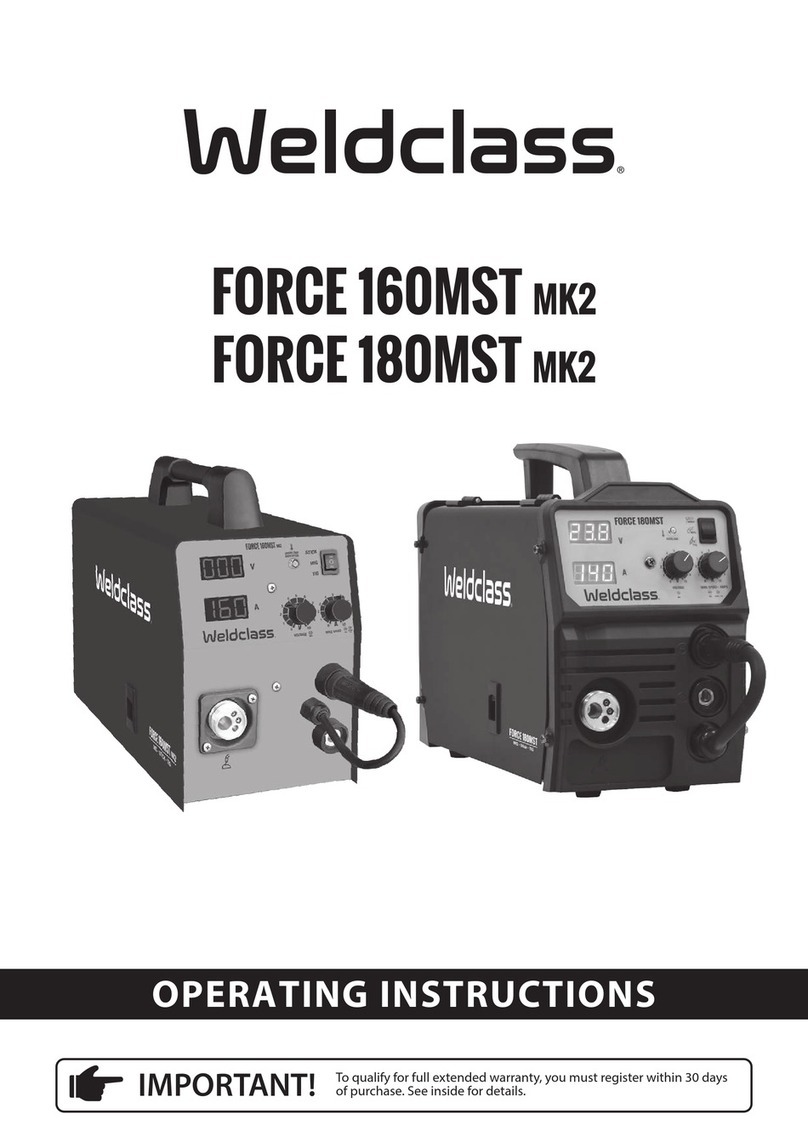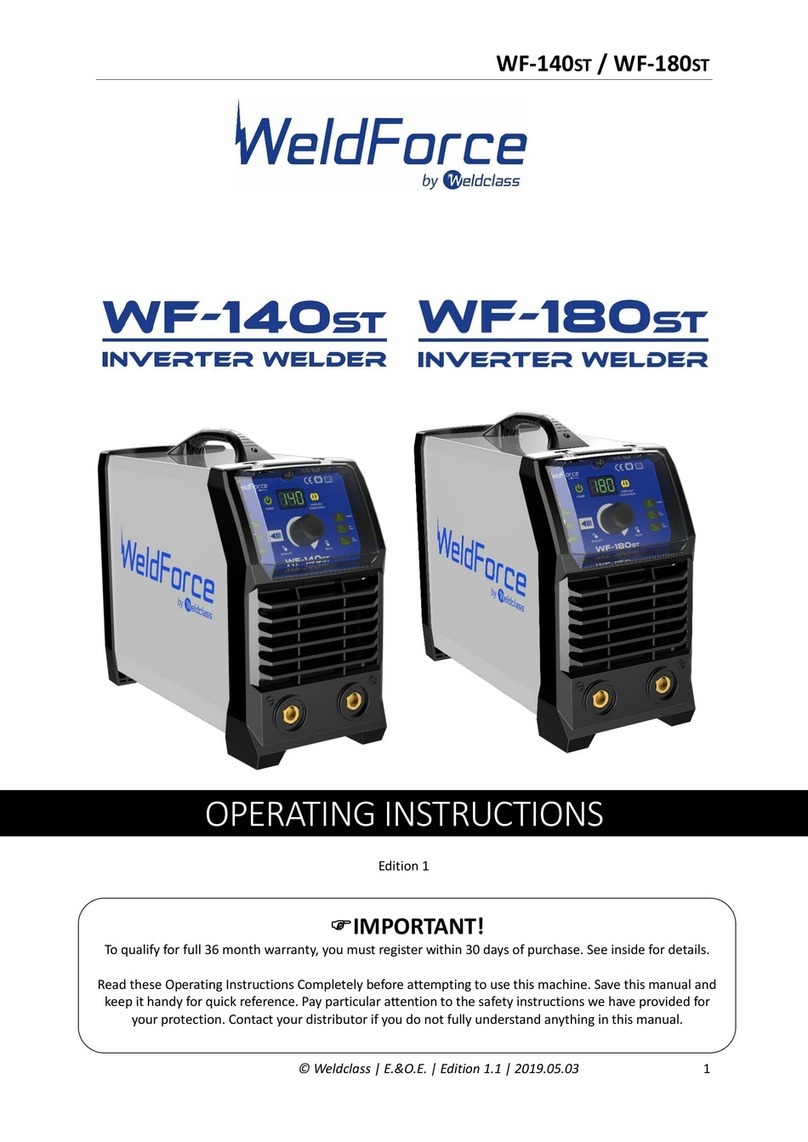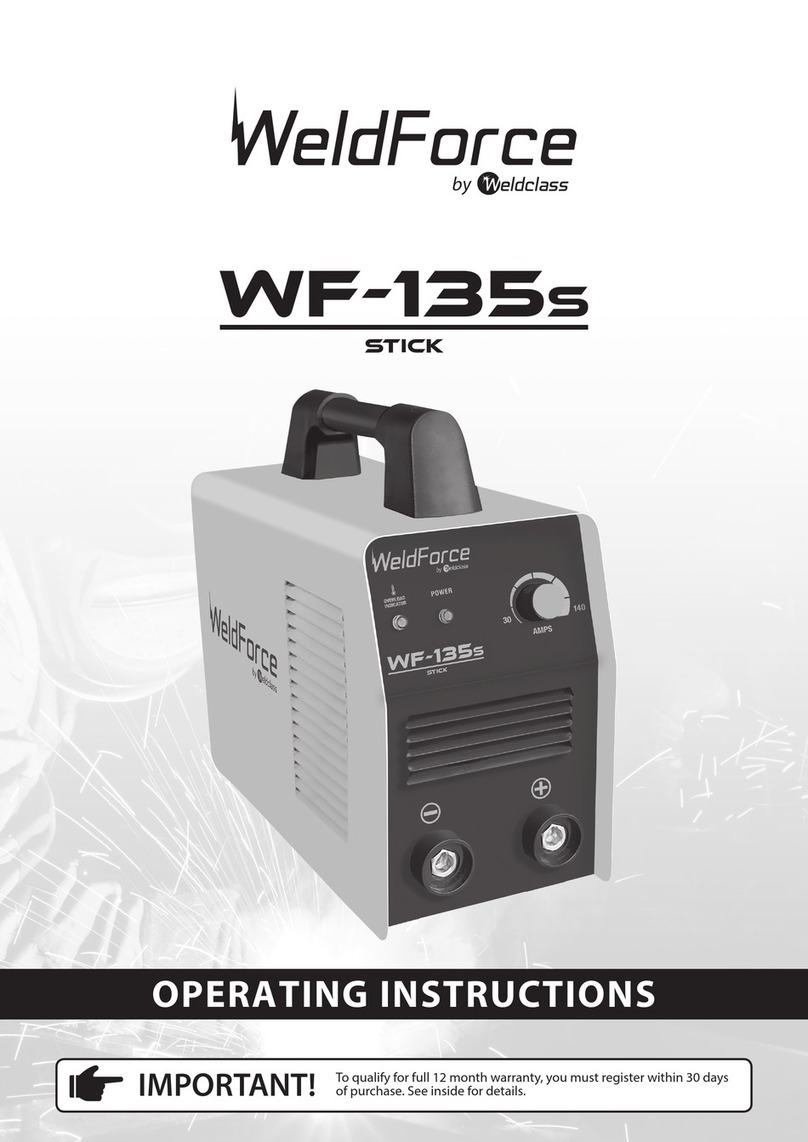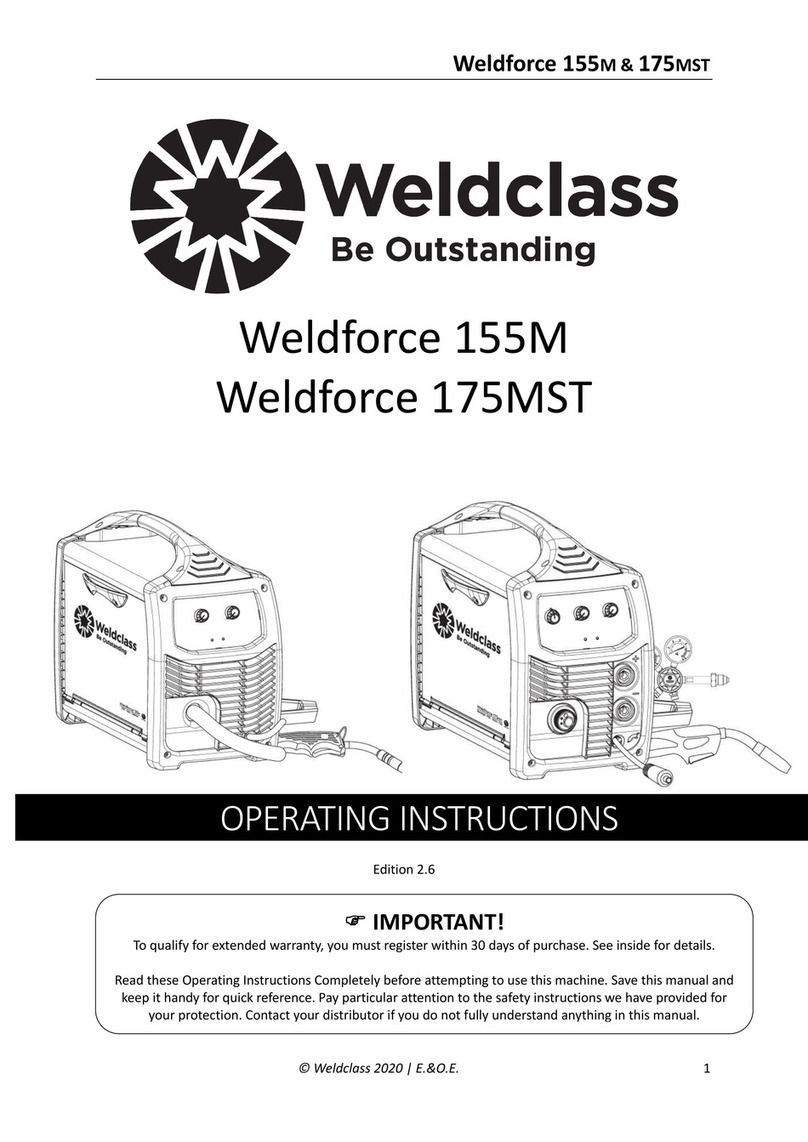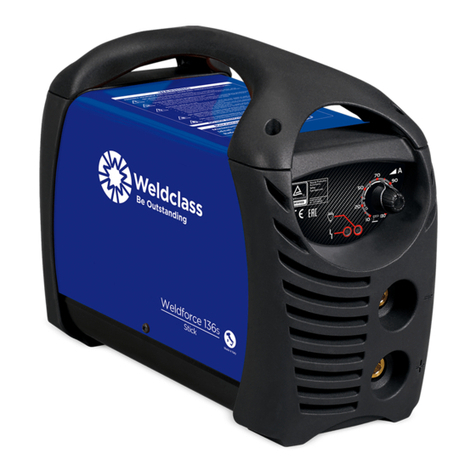
.
4© Weldclass 2019 | E.&O.E.
4.6 Remote Controls...........................................................................................................................18
4.6.1 Remote Control TIG Torch........................................................................................................18
4.6.1 Remote Foot Control (Optional Accessory)..............................................................................18
4.7 MMA/Stick Arc Parameters/Characteristics Settings ...................................................................19
4.7.1 Current / Amps (33) .................................................................................................................19
4.7.2 Hot Start Adjustment (34)........................................................................................................19
4.7.3 Arc Force Adjustment (Stick)....................................................................................................19
4.8 LCD Multi-Function Display (26)...................................................................................................20
4.9 Error/Over Temperature Indicator Light.......................................................................................20
5POWER SUPPLY .....................................................................................................................................22
5.1 Electrical Connection....................................................................................................................22
5.2 Extension Leads............................................................................................................................22
5.3 Generator Use ..............................................................................................................................22
5.3.1 Generator Size..........................................................................................................................22
5.3.2 Generator Quality & Warranty Limitations..............................................................................22
5.3.3 3 Golden Rules of Generator use .............................................................................................22
6OPERATING ENVIRONMENT..................................................................................................................23
6.1 Location........................................................................................................................................23
6.2 Ventilation....................................................................................................................................23
7BASIC SETUP..........................................................................................................................................24
7.1 Stick (MMA) Welding Setup .........................................................................................................24
7.2 TIG Welding Setup........................................................................................................................25
8ACCESSORIES, SPARE PARTS & CIRCUIT DIAGRAMS..............................................................................26
8.1 TIG Torch and Spares:...................................................................................................................26
8.2 Optional Accessories....................................................................................................................27
8.3 Machine Spare Parts: ...................................................................................................................27
8.4 Primary Schematic Circuit Diagram..............................................................................................29
9CARE & MAINTENANCE.........................................................................................................................30
9.1 Keep your Welding Machine in Top Condition.............................................................................30
9.2 Storing the Welder .......................................................................................................................30
10 GENERAL GUIDE TO WELDING .........................................................................................................31
10.1 Duty Cycle Rating .........................................................................................................................31
10.2 Choosing a Welding Process – MMA/Stick or TIG?......................................................................31
10.2.1 The Stick (MMA) Process .....................................................................................................31
10.2.2 The TIG Process....................................................................................................................32
10.3 Joint Preparations.........................................................................................................................33
11 STICK (MMA) BASIC WELDING GUIDE..............................................................................................35
11.1 Size of Electrodes .........................................................................................................................35
11.2 Storage of Electrodes ...................................................................................................................35
